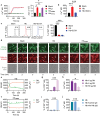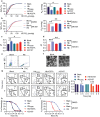Staphylococcus aureus β-hemolysin impairs oxygen transport without causing hemolysis
- PMID: 40202859
- PMCID: PMC11988224
- DOI: 10.1080/21505594.2025.2490208
Staphylococcus aureus β-hemolysin impairs oxygen transport without causing hemolysis
Abstract
Staphylococcus aureus (S. aureus) infection can lead to the occurrence of hypoxia, however, the underlying mechanisms have not been fully elucidated. β-hemolysin (Hlb) induced hemolysis of red blood cells (RBCs) requires a temperature transition from "hot" to "cold," a phenomenon not observed under physiological conditions. In this study, we discovered that RBCs treated with Hlb exhibited a high level of intracellular Ca2+ and underwent a shape transformation from biconcave discoid to spherical, which was contingent upon the degradation of sphingomyelin of the cell membrane and led to impaired oxygen transport. The increase in intracellular Ca2+ levels induced by Hlb was dependent on the activation of the ion channel N-methyl-D-aspartate receptor. Furthermore, we found that Hlb-induced Ca2+ influx increased the cytoplasmic pH and subsequently attenuated the oxygen release from RBCs, which were also observed in both hlb transgenic mice and a murine model with S. aureus challenge. Our findings reveal a novel role for Hlb as sphingomyelinase in impairing RBC function under non-lytic conditions, shedding light on the mechanism behind hypoxia associated with S. aureus infection.
Keywords: RBC; S. aureus; oxygen release; sphingomyelinase; β-hemolysin.
Conflict of interest statement
No potential conflict of interest was reported by the author(s).
Figures







Similar articles
-
Prescription of Controlled Substances: Benefits and Risks.2025 Jul 6. In: StatPearls [Internet]. Treasure Island (FL): StatPearls Publishing; 2025 Jan–. 2025 Jul 6. In: StatPearls [Internet]. Treasure Island (FL): StatPearls Publishing; 2025 Jan–. PMID: 30726003 Free Books & Documents.
-
Targeting the MEK1/2 pathway to combat Staphylococcus aureus infection and inflammation in cystic fibrosis.mBio. 2025 Jul 9;16(7):e0077525. doi: 10.1128/mbio.00775-25. Epub 2025 May 27. mBio. 2025. PMID: 40422262 Free PMC article.
-
Loratadine decreases virulence of methicillin-resistant Staphylococcus aureus by widespread disruption of hemolysis in both Stk1-dependent and -independent fashions.bioRxiv [Preprint]. 2025 Jun 5:2025.06.05.657702. doi: 10.1101/2025.06.05.657702. bioRxiv. 2025. PMID: 40501706 Free PMC article. Preprint.
-
Signs and symptoms to determine if a patient presenting in primary care or hospital outpatient settings has COVID-19.Cochrane Database Syst Rev. 2022 May 20;5(5):CD013665. doi: 10.1002/14651858.CD013665.pub3. Cochrane Database Syst Rev. 2022. PMID: 35593186 Free PMC article.
-
Nasal decontamination for the prevention of surgical site infection in Staphylococcus aureus carriers.Cochrane Database Syst Rev. 2017 May 18;5(5):CD012462. doi: 10.1002/14651858.CD012462.pub2. Cochrane Database Syst Rev. 2017. PMID: 28516472 Free PMC article.
References
Publication types
MeSH terms
Substances
Associated data
LinkOut - more resources
Full Text Sources
Other Literature Sources
Miscellaneous
